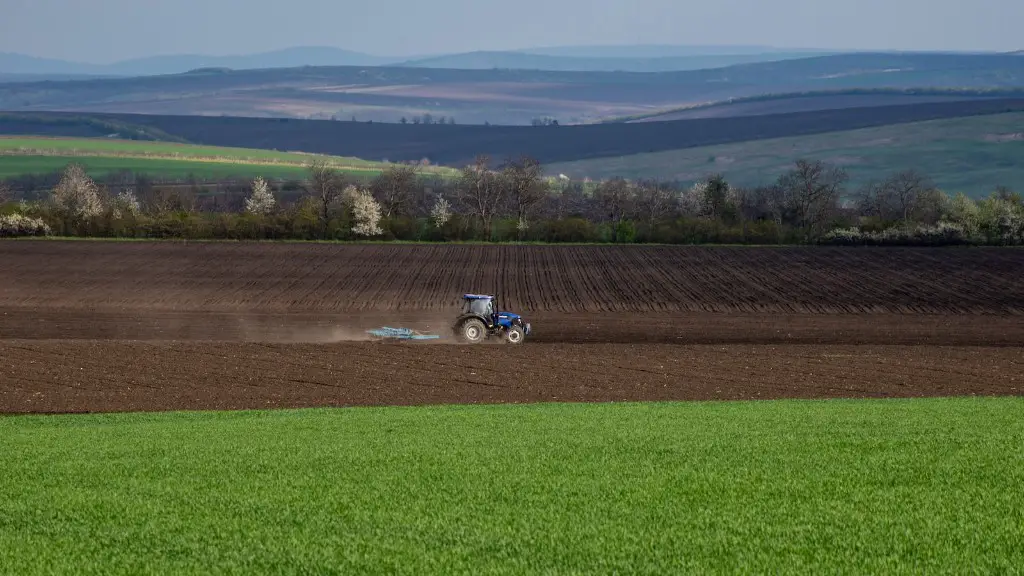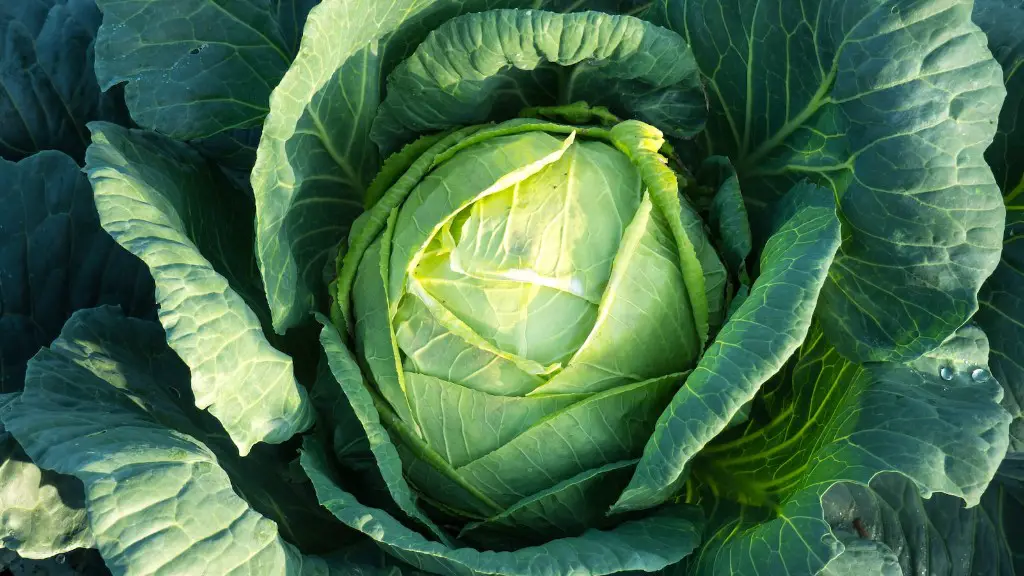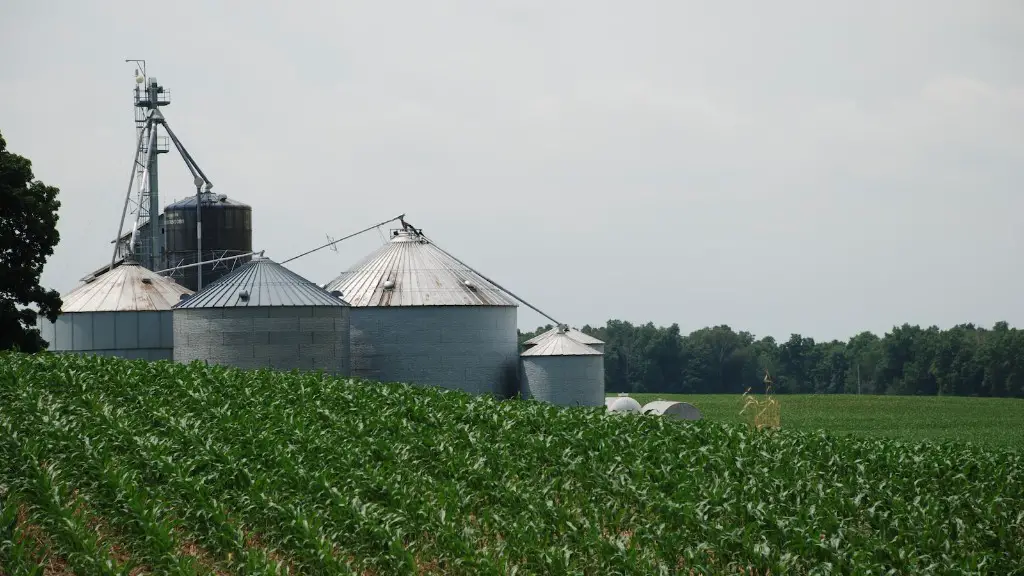In agriculture, genetics is the science of improving crops and livestock by manipulating their genetic makeup. As crops and livestock are the foundation of agriculture, genetics plays a vital role in ensuring the continued success of this important industry. By understanding and manipulating the genes of plants and animals, farmers can produce healthier, more productive, and more resilient crops and livestock that are better equipped to withstand the challenges of a changing climate and environment.
Genetics plays a critical role in agriculture as it can be used to improve the quality and yield of crops. By understanding the genetic makeup of plants, farmers can select for desirable traits and produce crops that are better suited to their environment and more resilient to pests and diseases. Additionally, genetic engineering can be used to create new varieties of crops with improved properties, such as resistance to herbicides or increased nutritional value. Ultimately, the use of genetics in agriculture can help to ensure a stable and reliable food supply for a growing population.
What is genetics in agriculture?
Agricultural genetics is the applied study of the effects of genetic variation and selection used to propagate valuable heritable trait combinations in crop plants and farm animals. This field of study is important for farmers and ranchers who want to produce high-yielding, disease-resistant crops and animals. Agricultural genetics has also played a role in the development of genetically modified crops and animals.
Agricultural genetics is the study of how traits are inherited in crops or livestock. An example of a plant trait is the number of days it takes for an ear of corn to reach maturity, or harvest. An example of a livestock trait is how tall a cow is expected to grow in its first year of life.
How does genetics improve agricultural industry
Genetic engineering is a powerful tool that can be used to improve crops and food. By editing the genes of plants, we can make them more resistant to pests and diseases, and increase their yields. We can also create more nutritious foods by adding or removing certain genes. Additionally, by using genetic engineering, we can reduce the need for herbicides and pesticides.
Genetic factors play an important role in our overall health and well-being. By understanding how these factors work, we can learn more about how to promote health and prevent disease. Some genetic changes have been linked to an increased risk of birth defects, developmental disabilities, and diseases such as cancer or heart disease. By understanding these risks, we can take steps to protect ourselves and our families.
What are two uses of genetics in agriculture?
The manipulation of DNA in plants has helped to create many desirable traits that make them more resistant to disease, pests, and improve their nutritional value and shelf life. These genetically modified organisms (GMOs) have made a big impact in the agriculture industry and have helped to improve the yield of crops and the quality of the food we eat.
The application of genetic principles has significantly improved milk production in cows and buffaloes, meat production in sheep’s, goats and pigs, and egg production capacity in poultry. This has helped to improve the overall productivity of these animals and has made them more efficient in terms of resource use.
How does the study of genetics affect animals in agriculture?
Genetic engineering is a process by which genes are inserted into or deleted from a plant or animal’s DNA. This can be done to change the characteristics of the organism, such as increasing its size or improving its disease resistance.
Genetic engineering can be used to increase agricultural productivity in a number of ways, such as by increasing the size of crops or improving their disease resistance. This can help to provide more food for more people in our community and elsewhere. Genetic engineering can also be used to improve animal welfare by making animals more resistant to diseases and able to adapt to changing environments and weather conditions.
Genes are responsible for carrying the hereditary information from one generation to the next. They control the structure and metabolism of the body by providing the necessary instructions. Reshuffling of genes during sexual reproduction leads to the production of variations. Different linkages are created due to the crossing over of genes.
What are genetic factors in plants
A producer has control over the genetic factor by his choice of variety. For example, selected varieties of rice grow rapidly, maturing within 110 days, whereas others, in the same environmental conditions, grow more slowly and mature within 155 days.
Genetic modification (GM) of plants is a process whereby a specific stretch of DNA is added into the plant’s genome, giving it new or different characteristics. This could include changing the way the plant grows, or making it resistant to a particular disease.
GM plants have been around for many years, and their safety has been well-established. In fact, many of the plants we eat today have been genetically modified in some way – for example, through the use of crop rotation and cross-breeding.
GM plants offer a number of potential benefits, including improved yield, better pest and disease resistance, and enhanced nutrition. They can also help to reduce the use of chemical pesticides and fertilizers, which can be damaging to the environment.
There are some concerns about GM plants, but these are largely unfounded. There is no evidence that GM plants are unsafe to eat, and the technology is well-regulated in most countries.
What is the importance of genetic engineering in agriculture and food?
genetic engineering is the direct manipulation of an organism’s genes. This technology is often used to change plants so that they are more resistant to disease and pests, or to create plants that have desirable traits, such as being larger or having a longer shelf life.
There are many potential benefits to genetically engineering plants. For example, plants that have been engineered to be more resistant to disease or pests can require fewer environmental resources (such as water and fertilizer), and may also produce more food. Additionally, plants that have been engineered to have desirable traits, such as being tastier or having a longer shelf life, may be more enjoyable to eat.
Overall, genetic engineering has the potential to create plants that are more nutritious, tastier, and easier to grow. However, it is important to note that this technology is still in its early stages, and there are many Unknowns about its long-term effects.
Genetic engineering in animal production has a number of practical benefits that are growing in popularity. These benefits include the production of transgenic animals resistant to disease, increasing the productivity of animals, treating genetic disorders, and producing vaccines. The use of genetic engineering in animal production is a major advances in medical and technological fields, and will continue to be an important part of these industries.
What are 5 examples of genetic factors
There are a number of different genetic disorders that can affect people, and it’s important to be aware of them. Here are five of the most common genetic disorders:
Down Syndrome: This is a condition that is caused by an extra copy of chromosome 21. It can lead to a number of different problems, including Intellectual disability, developmental delays, and physical abnormalities. Thalassemia: This is a blood disorder that is caused by defects in the hemoglobin gene. It can cause anemia and other problems. Cystic Fibrosis: This is a condition that is caused by mutations in the CFTR gene. It can lead to problems with breathing, digestion, and fertility. Tay-Sachs disease: This is a condition that is caused by mutations in the HEXA gene. It leads to a buildup of a fatty substance in the brain, which can cause neurological problems. Sickle Cell Anemia: This is a condition that is caused by mutations in the hemoglobin gene. It can cause a number of problems, including anemia, pain, and increased risk of infection.
If you or someone you know has a genetic disorder, there are a number of resources that can help. Genetics counselors can provide information and support, and
Genes are the basic units of hereditary and control the morphology or phenotypes of individuals. They are essential for cell division and carry the hereditary information from one generation to another.
What is the role of genes in human growth and development?
There are many different genes involved in human growth, both major and minor. Major growth genes have a fundamental effect on human growth, and their mutations can cause growth failure or overgrowth. However, not all mutations will result in a visible difference in growth. Some mutations may only have a minor effect, and others may not be detectable at all. In addition, there are many other genes involved in human growth that are not yet fully understood.
There is a great deal of variation in the size and shape of plant organs, even between closely related species. This variation is due in part to the action of different genes. Work in model species has identified a considerable number of genes that regulate different aspects of organ growth.
Organ growth is a complex process that is controlled by many different genes. Some of these genes control the overall size of the organ, while others control the shape or the rate of growth. In some cases, the same gene may have different effects in different parts of the plant.
A better understanding of the genes that control organ growth will eventually lead to the development of new plant varieties with improved characteristics. This knowledge may also be useful in the future for engineering organs for specific purposes, such as producing biofuels or pharmaceuticals.
What are some genetic factors that affect plants environmental factors
Different plant populations can have different genetic and chemical compositions due to environmental factors. Soil nutrients, temperature, water availability, and light intensity can all influence the diversity of plant populations. For example, plants that are adapted to low nutrient availability may have different genetic and chemical compositions than plants that are adapted to high nutrient availability. Additionally, plants that are adapted to high temperatures may have different compositions than plants that are adapted to low temperatures. By understanding how environmental factors influence the genetic and chemical diversity of plant populations, we can better understand how plant populations will respond to changes in their environment.
Water and soil nutrients are both essential for plant growth. Water is necessary for plants to uptake nutrients from the soil, and soil nutrients are necessary for plants to grow and thrive. While plants need both water and soil nutrients, they will respond differently to different levels of each. For example, if there is a lack of water, plants may wilt or appear dry, but if there is a lack of soil nutrients, plants may yellow or stop growing altogether. It is important to monitor both water and soil nutrients to ensure that plants are getting everything they need to grow and thrive.
Final Words
Genetics plays an important role in agriculture as it can help determine the characteristics of plants and animals used for food and other purposes. By understanding the genetic makeup of these organisms, farmers and breeders can select those with the desired traits and produce offspring with these same traits. This helps to ensure that crops and animals are better suited to the environment in which they will be raised and can improve the quality and quantity of food produced.
The importance of genetics in agriculture cannot be understated. By understanding the genetic makeup of crops, farmers can more effectively produce higher yields with fewer inputs. Additionally, genetics can help to create more resilient crops that are better able to withstand pests and diseases. This is especially important as climate change creates new challenges for farmers. Ultimately, genetics is a key tool that can help farmers to produce more food with fewer resources.





